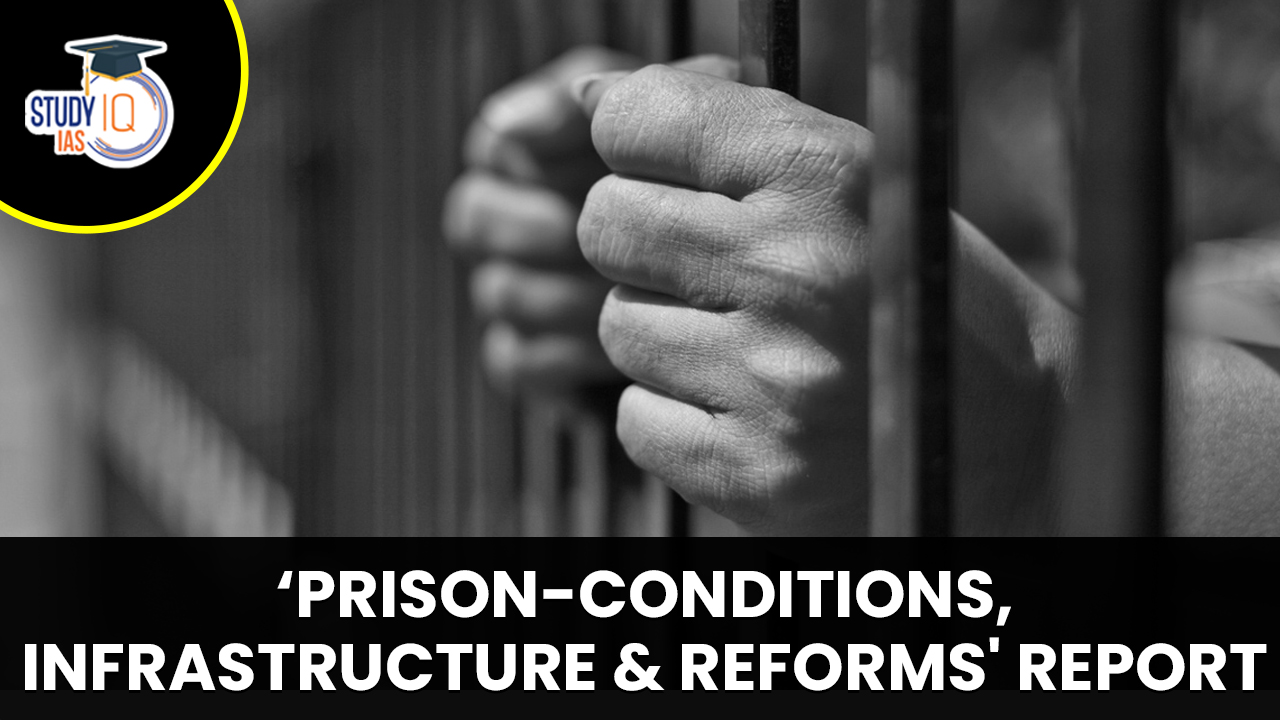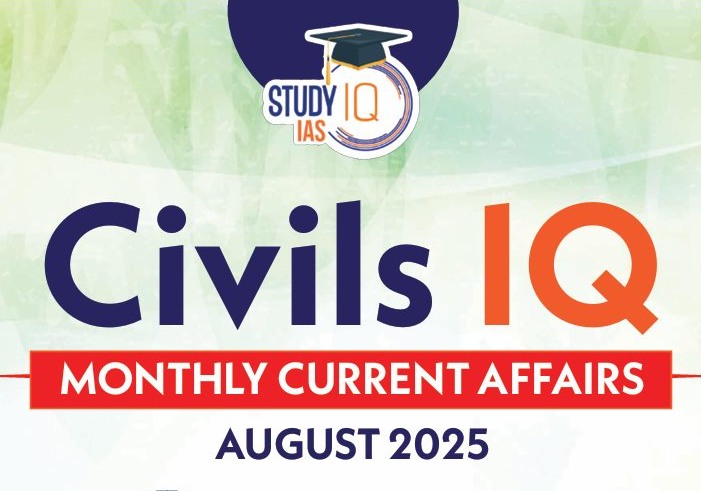Table of Contents
Context: The Parliamentary Committee on Home Affairs, presented the ‘Prison-Conditions, Infrastructure and Reforms’ Report recently.
Key Observations and Recommendations of the Report:
- Overcrowding in Indian prisons has long plagued the country’s criminal justice system.
- The national average occupancy rate in prisons across India is 130.2 per cent, and the states of Uttar Pradesh, Bihar, Madhya Pradesh, Maharashtra, Punjab and Haryana together make up for more than 50 per cent of the total prisoner population in the country.
- In four of these six states, the occupancy rate in prisons is more than the national average. Further, the state of Uttarakhand has reported the highest occupancy rate of 185 per cent.
- Delhi with the highest crime rate in the country of 1479.9 has an occupancy rate of 182 per cent.
- The problem of overcrowding in the Indian prisons is mostly because of a very large number of undertrial prisoners. Of all the prisoners in the country, more than 50 per cent are undertrials.
Recommendations:
- Ankle trackers or bracelets may be used on prison inmates to reduce overcrowding in prisons.
- Prisoners from overcrowded jails may be transferred to other jails with vacant cells in the same State or other States.
- Special attention should be given to pregnant women and children in prisons relating to food, shelter, medical care, education, and physical growth,
- Babies born in prison shall be allowed to stay with their mothers until the age of 12.
- Transgender prisoners are to be provided the same standards of healthcare available to other inmates.
- The report also recommended that the government should take steps to reduce the number of undertrial prisoners by expediting trials and improving the efficiency of the criminal justice system.
Prions and their governance in India
- Prisons serve as correctional homes that are designed to punish and rehabilitate individuals who have been convicted of crimes.
- They are an integral part of the criminal justice system (CJS) that deals with crime prevention, investigation, prosecution, punishment and correction.
- Prison governance in India:
- Prison is a State subject under List-II of the Seventh Schedule in the Constitution.
- The modern prison system was conceptualized by TB Macaulay in 1835.
- The management and administration of Prisons falls exclusively in the domain of the State Governments, and is governed by the Prisons Act, 1894 and the Prison Manuals of the respective State Governments.
- However, the Ministry of Home Affairs provides regular guidance and advice to States and UTs on various issues concerning prisons and prison inmates.

Need for reforms in Indian prisons
- Overcrowding of prisons: According to the ‘Prison Statistics 2021’, the average prison in the country has an occupancy rate of 130%.
- This undermines the ability of prison systems to meet the basic needs of prisoners, such as healthcare, food, and accommodation.
- This also endangers the basic rights of prisoners, including the right to have adequate standards of living and the right to the highest attainable standards of physical and mental health.
- Undertrials: Based on the ‘Justice India Report 2022’, 77 percent of the prisoners were undertrials. The pendency of cases is a main reason for undertrials remaining in prison.
- As these awaiting trial inmates come into touch with their incarcerated inmates, they get influenced into the world of crime.
- Custodial Tortures /Deaths: Brutal physical treatment in custody by police official is another major problem of jails in India.
- According to the National Human Rights Commission (NHRC) in the last decade (2010-2020) on an average 5 people died in judicial custody every day.
- Staff shortage: India’s prisons are understaffed by at least 33 per cent with the highest vacancies found at the officer and correctional staff levels.
- This has increased the workload of the staff and is having an impact on the ‘correctional’ aspect of imprisonment.
- Lack of infrastructure: Most jails in India suffer from lack of basic prison infrastructure such as sleeping quarters, hygienic washrooms, and health clinics.
- The budgetary support for prison system has not increased proportionally to the population.
- Hygiene: Indian prisons are considered some of the most unhygienic in the world. Prisoners housed in these prisons suffer from diseases such as jaundice, hepatitis etc.
- Issues of women prisoners: There is a severe lack of female staff, inadequate numbers of toilets, bathrooms and other basic preconditions for sanitation and hygiene. They also remain particularly vulnerable to custodial sexual abuse.
- Insufficient Legal Aid: There are many accused individuals who are forced to stay in prison due to their inability to pay legal fees to fight their case.
- Mentality of the system: People involved in prison management suffer from a colonial hangover, which prescribes harsh treatment for prisoners. They still believe that prisoners must be treated harshly.
Various committees and their suggestions on prison reforms
| Justice Mulla Committee (1983) |
|
| Justice V. R. Krishna Iyer Committee on Women prisoners (1987) |
|
| Committee under the Chairmanship of Director General, Bureau of Police Research and Development (BPR&D) (2005) |
|
| Justice Amitava Roy Panel on Prison Reforms (2018) |
|
Various initiatives for the improvement of conditions in Indian prisons:
- Modernisation of Prisons (MoP) Project: Government of India has decided to provide financial assistance to States and UTs, through MoP for using modern-day security equipment in Prisons for
- E-Prisons Project: The E-Prisons project aims to introduce efficiency in prison management through digitization.
- Model Prison Manual 2016: The manual provides detailed information about the legal services (including free services) available to prison inmates.
- Fast Track Courts: Fast Track Courts (FTC) are the type of courts that provide swift justice and are established after consultation with respective High Courts.
- e-Courts Project: The project will streamline the judicial processes and transform the Indian Judiciary by ICT enablement of Courts. This will reduce pendency in the judiciary and help the litigants.
- Model Prisons Act, 2023: Drafted by the Bureau of Police Research and Development, as per directions of the home ministry. It seeks to modernize the 130-year-old Prisons Act, 1984 and protect the society from the criminal activities of hardened criminals and habitual offenders.
Way Forward:
- Use of technology: Technological upgradations such as biometric identification facilities, prisoner information system, provision of CCTVs, video conferencing facilities along with critical infrastructure such as hospital, sanitation systems are needed.
- Open Prisons: In 1980, the All-India Committee on Jail Reform suggested that open prisons be established in all of the states and UTs.
- Open prisons have relatively less stringent rules as compared to controlled jails. They go by many names like minimum-security prison, open-air camps or prison without bars.
- Reducing undertrials:
- Timely and complete production of under trials before the court so that a trial is not prolonged.
- Introducing the system of plea bargaining which refers to negotiation where the accused agrees to plead guilty in exchange for certain concessions by the prosecution.
- Capacity building in lower judiciary to reduce the number of adjournments while hearing bail pleas.
- Improving the system of Parole and Furlough: To enable prisoners to preserve their social connections and mitigate the effects of overcrowding in prisons.
- Grant of parole and furlough must be balanced against public interest and can be refused to certain categories of prisoners.
- A robust grievance redressal mechanism: should be put in place in all prisons to ensure the rights of prisoners are not violated and their concerns are heard impartially.
- Skill development: Upgrading the educational facilities, vocational training, and skill development programs within prisons can not only enhance the daily lives of prisoners but also provide them with economic support upon release.
- Adherence to key international rules and standards such as:



 High Seas Treaty Challenges in Global Oc...
High Seas Treaty Challenges in Global Oc...
 Heavy Metals Contamination in the Cauver...
Heavy Metals Contamination in the Cauver...
 Gallium Nitride (GaN) Technology: Poweri...
Gallium Nitride (GaN) Technology: Poweri...

























